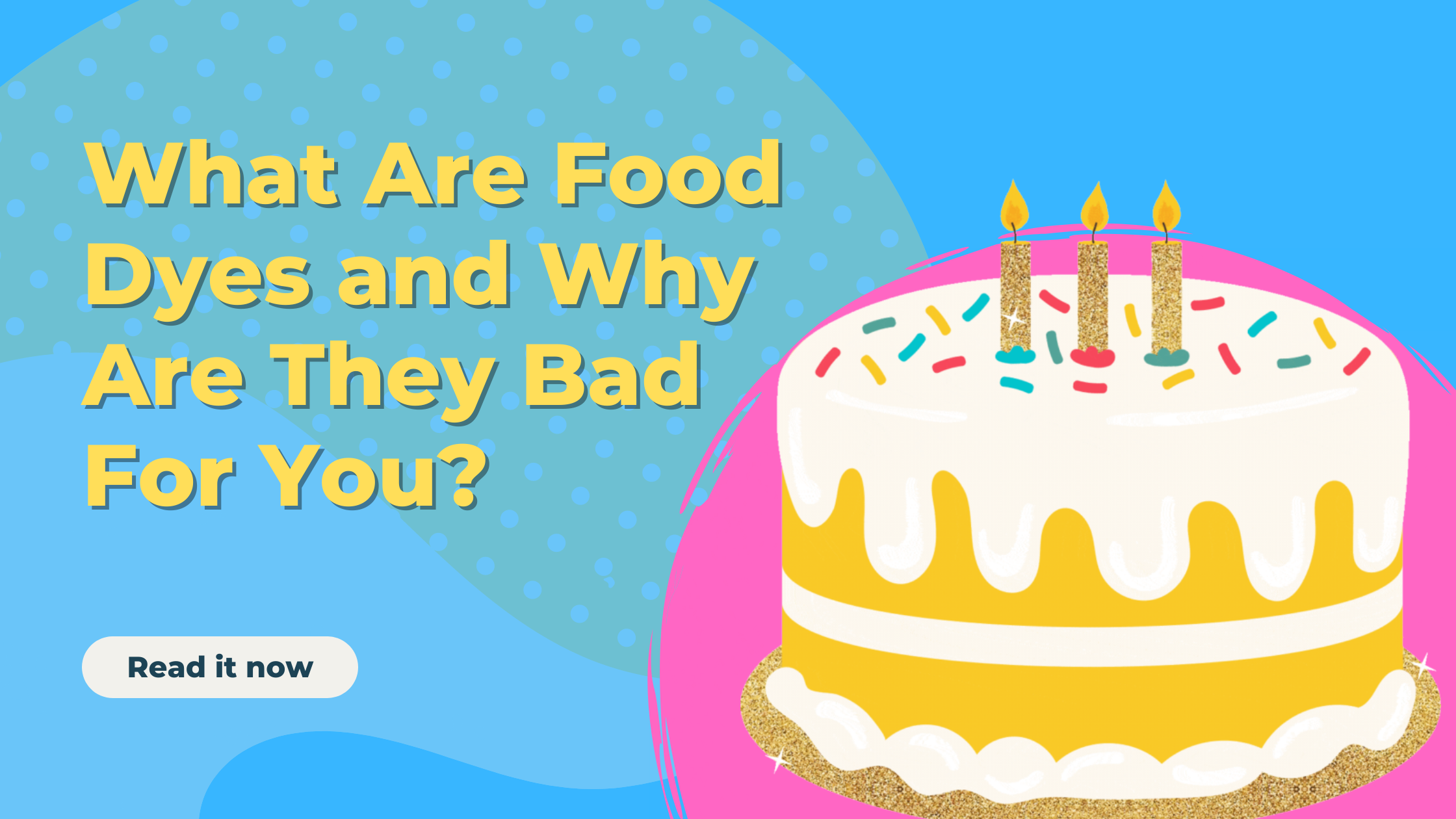What Are Food Dyes and Why Are They Bad For You?
Food dyes are artificial colorants that are added to foods and beverages to enhance their appearance. They are commonly used in a wide range of products, from candies and desserts to processed foods, beverages, and even medications. While they make our food look more appetizing and appealing, food dyes have been linked to various health problems, and as a result, many people are looking for ways to avoid them.
So, what are food dyes, and why are they bad for you? In this article, we will take a closer look at these artificial colorants and their potential impact on our health.
What are food dyes?
Food dyes are artificial colorants that are added to foods and beverages to give them a more attractive appearance. They are made from a variety of chemicals, including coal tar, petroleum, and other synthetic compounds. Food dyes are usually listed on ingredient labels as FD&C followed by a color and a number (for example, FD&C Red No. 40).
Types of food dyes
There are two main types of food dyes: synthetic and natural. Synthetic food dyes are derived from petroleum and other chemicals, while natural food dyes are derived from plant and animal sources.
Synthetic food dyes are more commonly used in the food industry, as they are cheaper and easier to produce. Some of the most commonly used synthetic food dyes include:
Red 40 (Allura Red)
Yellow 5 (Tartrazine)
Yellow 6 (Sunset Yellow)
Blue 1 (Brilliant Blue)
Blue 2 (Indigo Carmine)
Green 3 (Fast Green)
Why are food dyes bad for you?
While food dyes are considered safe by many regulatory agencies, such as the FDA, there is growing evidence that they may be harmful to our health, especially in large amounts. Some of the potential health risks associated with food dyes include:
Hyperactivity and behavioral problems: Several studies have linked food dyes to hyperactivity and other behavioral problems in children, particularly those with ADHD.
Allergic reactions: Some people may be allergic to certain food dyes, which can cause symptoms such as hives, swelling, and breathing difficulties.
Cancer: While the link between food dyes and cancer is still not clear, some studies have suggested that certain food dyes may increase the risk of cancer in animals.
Other health problems: Food dyes have also been linked to other health problems, such as migraines, asthma, and skin rashes.
How to avoid food dyes
If you want to avoid food dyes, there are several things you can do:
Read food labels: Look for foods that do not contain artificial colorants, or choose products that use natural food dyes.
Choose natural foods: Eat a diet that is rich in natural, whole foods, such as fruits, vegetables, and whole grains.
Cook at home: When you cook at home, you have more control over the ingredients you use, so you can avoid artificial colorants.
Be aware of hidden sources of food dyes: Food dyes can be found in many unexpected products, such as vitamins, cough syrups, and even some pet foods.
Sports drinks: Many of these drinks add in color to represent their flavor. Nothing like thinking your grabbing a healthy drink when its colored with chemicals from a lab. Here is our number 1 recommended alternative.
Conclusion
Food dyes are artificial colorants that are added to foods and beverages to enhance their appearance. While they make our food look more appetizing and appealing, they have been linked to various health problems, and as a result, many people are looking for ways to avoid them. If you want to reduce your exposure to food dyes, you can read food labels, choose natural foods, cook at home, and be aware of hidden sources of food dyes.

